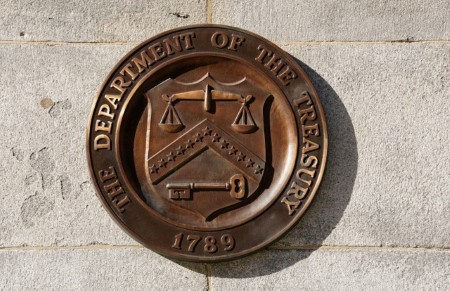




Philippines Trade Update: Trade trajectories trend along
 DOWNLOAD
DOWNLOAD

Policy Rate Updates: Double cut finale
 DOWNLOAD
DOWNLOAD

Monthly Economic Update: One for the road
 DOWNLOAD
DOWNLOAD


US yields firm as new supply soaked up and CPI in focus

US Treasury yields firmed on Wednesday as investors weighed the chances that the Federal Reserve will lower rates one or more times this year while digesting a plenitude of new Treasury debt and awaiting important inflation data next week.
New supply has been the theme in a week lacking in market-moving economic reports. On Wednesday, the Treasury sold USD 42 billion in 10-year notes at a high yield of 4.483%, a smidge under where the when-issued appeared to be trading on the screens around the close of bidding. The bid-to-cover ratio, an indicator of demand, was 2.49.
That followed a three-year note auction on Tuesday that saw healthy demand.
Gennadiy Goldberg, head of US rates strategy at TD Securities in New York said that despite a small tail — the difference between the average price and the lowest bid that got a 10-year note at the auction — it and the bid-to-cover were in line with recent averages.
The 10-year yield ticked slightly higher after the auction, which can be a sign of disappointment, and was last up 3.1 basis points on the day at 4.492%.
“I would say despite the tail at the auction, it was still relatively strong,” Goldberg said.
The 2-year note yield, which typically moves in step with interest rate expectations, was up 1.3 basis points at 4.8407%.
The US Treasury yield curve spread between yields on two- and 10-year Treasury notes, seen as an indicator of economic expectations, was negative 38.3 basis points, more inverted than -34.8 basis points late Tuesday.
The 30-year bond yield was up 2.7 basis points at 4.6318%. The Treasury will sell USD 25 billion of 30-year bonds on Thursday.
Yields fell sharply on Friday on news that the economy created fewer than expected jobs in April. The report accelerated a bond rally after the Federal Open Market Committee said the recent uptick in inflation and economic growth was unlikely to derail rate cuts this year. The Federal Reserve all but ruled out rate hikes.
The 10-year yield hit its lowest since April 10 on Tuesday, while on Friday the yield on the 2-year note fell to the lowest since April 5.
The April Producer Price Index report comes on Tuesday, and the closely followed CPI number next Wednesday, which will provide insight into whether inflation has resumed its downward trend toward the Fed’s 2% target rate.
This week brought a full roster of Fed speakers to fine-tune the message from last week’s FOMC meeting, which left the Fed funds rate in the 5.25%-5.50% range it’s been in since July.
On Wednesday Boston Fed President Susan Collins said there were risks to cutting rates too soon but she was optimistic the Fed’s current policy will help slow the economy and can get inflation to target in a reasonable time frame.
In the Fed funds futures market, traders are pricing in a 66% chance the Fed will pivot in September with at least a 25-basis-point cut at that meeting, unchanged from Tuesday. The second cut is being bet on for December.
The number of cuts expected in 2024 by the market has come down from six or seven earlier this year, as inflation picked back up and economic growth stayed healthy.
(Reporting by Alden Bentley; Editing by Richard Chang and Nick Zieminski)
This article originally appeared on reuters.com





 By Reuters
By Reuters